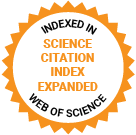Journal of Medical Internet Research
The leading peer-reviewed journal for digital medicine and health and health care in the internet age.
Editor-in-Chief:
Gunther Eysenbach, MD, MPH, FACMI, Founding Editor and Publisher; Adjunct Professor, School of Health Information Science, University of Victoria, Canada
Impact Factor 5.8 CiteScore 14.4
Recent Articles

Adequate health literacy has been shown to be important for the general health of a population. To address this, it is recommended that patient-targeted medical information is written at a sixth-grade reading level. To make well-informed decisions about their health, patients may want to interact directly with peer-reviewed open access scientific articles. However, studies have shown that such text is often written with highly complex language above the levels that can be comprehended by the general population. Previously, we have published on the use of large language models (LLMs) in easing the readability of patient-targeted health information on the internet. In this study, we continue to explore the advantages of LLMs in patient education.

The integration of connected medical devices (MDs) into health care brings benefits but also introduces new, often challenging-to-assess risks related to cybersecurity, which have the potential to harm patients. Current regulations in the European Union and the United States mandate the consideration of these risks in the benefit-risk analysis (BRA) required for MD approval. This important step in the approval process weighs all the defined benefits of a device with its anticipated risks to ensure that the product provides a positive argument for use. However, there is limited guidance on how cybersecurity risks should be systematically evaluated and incorporated into the BRA.

Wearable technologies have become increasingly prominent in health care. However, intricate machine learning and deep learning algorithms often lead to the development of “black box” models, which lack transparency and comprehensibility for medical professionals and end users. In this context, the integration of explainable artificial intelligence (XAI) has emerged as a crucial solution. By providing insights into the inner workings of complex algorithms, XAI aims to foster trust and empower stakeholders to use wearable technologies responsibly.

Lumbar spinal stenosis (LSS) is a major cause of pain and disability in older individuals worldwide. Although increasing studies of traditional machine learning (TML) and deep learning (DL) were conducted in the field of diagnosing LSS and gained prominent results, the performance of these models has not been analyzed systematically.

Mobile health (mHealth) interventions have gained popularity in augmenting psychiatric care for adults with psychosis. Interest has grown in leveraging mHealth to empower individuals living with severe mental illness and extend continuity of care beyond the hospital to the community. However, reported outcomes have been mixed, likely attributed in part to the intervention and adopted outcomes, which affected between-study comparisons.

Structured and standardized documentation is critical for accurately recording diagnostic findings, treatment plans, and patient progress in health care. Manual documentation can be labor-intensive and error-prone, especially under time constraints, prompting interest in the potential of artificial intelligence (AI) to automate and optimize these processes, particularly in medical documentation.

The development of wearable solutions for tracking upper limb motion has gained research interest over the past decade. This paper provides a systematic review of related research on the type, feasibility, signal processing techniques, and feedback of wearable systems for tracking upper limb motion, mostly in rehabilitation applications, to understand and monitor human movement.

As health care continues to evolve with technological advancements, the integration of artificial intelligence into clinical practices has shown promising potential to enhance patient care and operational efficiency. Among the forefront of these innovations are large language models (LLMs), a subset of artificial intelligence designed to understand, generate, and interact with human language at an unprecedented scale.

Previous studies have shown that electrocardiographic (ECG) alarms have high sensitivity and low specificity, have underreported adverse events, and may cause neonatal intensive care unit (NICU) staff fatigue or alarm ignoring. Moreover, prolonged noise stimuli in hospitalized neonates can disrupt neonatal development.
Preprints Open for Peer-Review
Open Peer Review Period:
-
Open Peer Review Period:
-
Open Peer Review Period:
-
Open Peer Review Period:
-




















